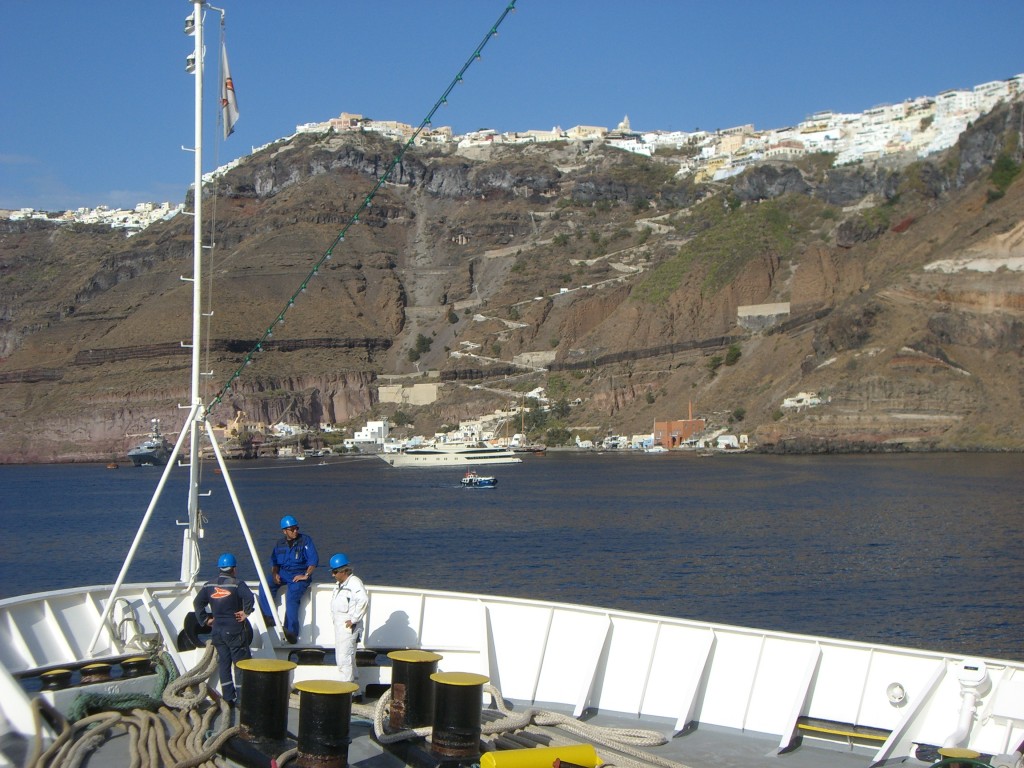“I’ve made my share of mistakes when getting money ready for the trip. Luckily, my mistakes weren’t too costly.”
You know the feeling – excitement about the impending flight to the place of your dreams. I love the feeling, and hate it at the same time. Mostly because I’m always concerned that I’ve forgotten something important. There’s a lot to do before you leave, and one of the most important things to take care of is your money.
We used to go to the bank about a month before departure and order Euros for the trip. I wanted to be able to pay for the hotel or the apartment in full once we arrived. I also thought that it would be a good idea to have 1,000 Euros or so in my money belt just in case. Who knows what you will run into and it seemed like a good idea at the time. But once reality set in, I learned that changing a lot of money is expensive and really not necessary.
If you were to change $1,500.00 into Euros at the bank, they charge a fee that very quickly gets expensive. I recall paying something in the neighborhood of $220.00 for the privilege of buying a packet of about 1,000 Euros. I was outraged when I found out just how much they wanted to make the exchange. But, I guess they have to make a buck on the deal. I tried to cancel the exchange, but they wouldn’t do it. You would think that your bank might want to provide this service for you at a more reasonable cost. You would be wrong. In future exchanges, I limited the Euro purchase to about 400. That way, the bank doesn’t get such a big commission on the transaction. And besides, it’s not really necessary to carry that much cash with you in most cases. Unless you have a really urgent need to arrive with a lot of cash, you should keep it to a minimum.
So how do you make sure you will have the cash you need when you get to your destination? The best way is to see if anyone you know has some currency from the country you are going to. Buy it from them so you’ll have money in your pocket right away. That is always the best way to get a great exchange rate. We always bring back $100.00 or so in coins and bills if we think we’ll be returning in the future. It really comes in handy to have some large coins and various bills to start the trip with.
If you don’t have access to currency any other way, then you can do one of two things. The first is to check with your bank and find out if there are other banks where you are going that have an agreement with your bank on fees for withdrawal. For example, I asked my bank to give me a list of foreign bank ATM’s I could use that wouldn’t charge me a fortune in fees in Italy while we were there. We looked for those ATM’s as soon as we got to the airport and withdrew the limit right away. Whenever we were walking around, we made it a point to keep an eye peeled for one of the ATM’s on the list. We would always withdraw when we had the opportunity to keep from running out of money.
The second choice you have is to pay the fees at your bank and exchange your money. They will order the currency and have it shipped to your branch, usually in a few days. Be sure to exchange only what you need to get started, and then withdraw from an ATM as needed once you get there. Don’t forget to take all precautions and wear your money belt! Fees for withdrawing from ATM’s vary, but you will get a decent exchange rate when you do. The rates are much better than when you use a currency exchange service. You see them all the time in the airports. The darn things are SO EXPENSIVE that you definitely want to avoid them. Don’t use them unless you are really desperate (I can’t imagine when that would be, but it could happen). They will hit you with so many fees so fast that you won’t be able to react quick enough to cancel the transaction. We made the mistake of trying to exchange $200.00 to get a few more Euros to finish up our trip. Once they have your money, they are behind a bullet proof glass window and there is nothing you can do to get them to cancel the transaction. They will only tell you part of the story to get your money and then you’ll learn how much it will really cost – but it will be too late. No matter what you do or say, they’ll tell you that the transaction has already been processed and can’t be reversed. In frustration, you’ll give up and walk away cursing at the person in the booth. On the $200.00 exchange we made, we only got 99 Euros. I figure the transaction cost us about $65.00. Don’t let this happen to you!!
Once you have your currency in hand, you will want to protect it from thieves and pickpockets. Europe has a big problem with theft and you have to watch your money, luggage and valuables like a hawk. Otherwise, you’ll quickly find that your belongings are gone with the wind.
A great example of a place to be wary of is the Trevi Fountain in Rome. We stopped there with a group to have a look and to throw a coin into the fountain. While we were there, we observed young girls going through the crowd, reaching into women’s purses and trying to take wallets from all the tourists packed into the square. Some of the locals chased them off, but before we left the area, we saw a woman in tears talking to a policeman. Thieves had taken her wallet out of her purse. She lost her passport, money, credit cards, everything. That could have been easily avoided. But people either don’t know that there are pickpockets working the crowds, or they ignored the warnings. Either way, I hate to see that happen. It need not happen to you.
Your money should be kept in a money belt under your clothing so no one can gain access to it. There are many types of money belts offered. Pick one that you like and keep your valuables in it. You should only have the money you need for the day in a pocket (preferably a pocket with a zipper or button on your shirt). Pants pockets are fairly vulnerable. You should keep your money close and in a place that is hard for a thief to get to.
Also, you never want to go into your money belt in public. You don’t know when people are watching. Keep your money belt a secret. If you must get into it, go into a bathroom or some other private place. If you make it difficult for a thief, he will look elsewhere for an easier target. That is the whole strategy in a nutshell. Make it hard for a thief and he will look for an easier target. It’s really that simple.
PLEASE TAKE NOTE: Most places you go in Europe are very safe. You might have your luggage stolen or your pocket picked – it’s been that way for a long time. But physical violence is rare. If you can learn the tricks and scams that are run on tourists, you can avoid being separated from your money. Being prepared for what is ahead is the key to guarding your money and belongings.
I have a number of great travel tips on 10 Minute Travel to help you prepare yourself for your next trip. If you want to start to prepare for your next trip, read some of these articles to get started. If you’re looking for hints on money safety, review these articles for the 411 on that. Personal safety is always important, so check out these travel tips to see if you have prepared properly. And lastly, see this article on getting money while traveling.
You can see a cloud listing of travel tips and choose the subjects you are interested in. This is time well spent so that you are familiar with things you might run into all over the world.
Remember – keep your money, luggage and personal items like cameras, iphones, ipads and jewelry close (it’s really best to leave jewelry at home in the safe deposit box) so you won’t lose it. Don’t set things down, even for a minute, as thieves are waiting for you to be distracted so they can snatch whatever they can. If you stay aware of your surroundings and don’t take your eye off the ball, you’ll do fine. Vigilance is a small price to pay to protect your valuable documents, money and possessions. You’ll enjoy your trip much more if you can avoid being ripped off by the people who prey on tourists.
I’d really like to hear from you if you have a story to tell about keeping your money and possessions safe while traveling. Consider sharing it with the 10 Minute Travel readers!


